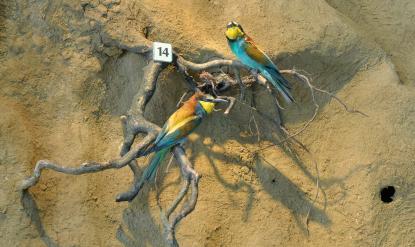2024. November 23. Saturday
Geographic Museum of the Tuszazug - Tiszaföldvár
|
|
Address: 5430, Tiszaföldvár Kossuth u. 101.
Phone number: (56) 470-135, (56) 570-525
E-mail: tf.muzeum@gmail.com
Opening hours: Tue-Sat 9-12, 13-17
On prior notice: beyond the opening hours as well! |
Museum tickets, service costs:
|
Ticket for adults
|
300 HUF
|
|
|
Group ticket for adults
(min. 10 people)
|
150 HUF
|
|
|
Ticket for students
|
150 HUF
|
|
|
Ticket for children
|
150 HUF
|
|
|
Ticket for pensioners
|
150 HUF
|
|
|
Guide
|
2000 HUF
|
|
|
Photography
|
2000 HUF
|
|
|
Video
|
5000 HUF
|
The Geographical Museum of Tiszazug, founded in 1956, waits its visitors with a new spectacular permanent exhibition on 100 sq m in the renewed building, which renovation was supported by the Ministry of Education and Culture, the county government and the county directorate of museums.

The exhibition entitled /Tiszavilág /shows the characteristics of Tiszazug region and the most interesting pieces of museum's collection in a modern way, thus it fully meets the needs of today's visitors and stimulate thinking. Beside the rich palaeontological materials from the riverbed of Tisza (mammoth, giant deer, lanigerous rhinoceros, prehistoric bison) the visitors can get acquainted with fish in aquarium representing its natural growing space, the riverbed.
Two types of mounds from the archaeological materials can be also seen, which characterized the Great Hungarian Plain, the settlement mound and burial mound or kurgan. They are exhibited as models indicating their layers too.
Archaeological toys and exercise book for children placed in their high can help to bring the exhibition close to them, and adults can get further information from an interactive map. Beside the permanent exhibition the museum regularly opens ethnographical, historical, natural historical and art seasonal exhibitions, students are waited with museum pedagogical programmes, on which the website of the museum provides information.

The exhibition entitled /Tiszavilág /shows the characteristics of Tiszazug region and the most interesting pieces of museum's collection in a modern way, thus it fully meets the needs of today's visitors and stimulate thinking. Beside the rich palaeontological materials from the riverbed of Tisza (mammoth, giant deer, lanigerous rhinoceros, prehistoric bison) the visitors can get acquainted with fish in aquarium representing its natural growing space, the riverbed.
Two types of mounds from the archaeological materials can be also seen, which characterized the Great Hungarian Plain, the settlement mound and burial mound or kurgan. They are exhibited as models indicating their layers too.
Archaeological toys and exercise book for children placed in their high can help to bring the exhibition close to them, and adults can get further information from an interactive map. Beside the permanent exhibition the museum regularly opens ethnographical, historical, natural historical and art seasonal exhibitions, students are waited with museum pedagogical programmes, on which the website of the museum provides information.
|
Related activities
|
|||
